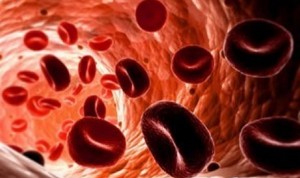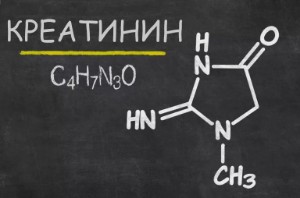Tips on how to increase calcium levels in the human body and blood — Top 10 foods
 Today, even schoolchildren know that the human body is practically a "walking periodic table."
Today, even schoolchildren know that the human body is practically a "walking periodic table."
And although 96% of us consist of atoms of oxygen, hydrogen, carbon, and nitrogen (water and gas), the remaining 4% coming from chemical elements are no less important. It is in these 4% that calcium occupies a leading place.
According to research, the level of calcium in the human body can be normalized with the help of a diet.
In this article, you will learn why calcium is so important for the normal functioning of the body, as well as how you can increase its level in the blood by following a diet and including certain foods in the diet.
Content
- Why is calcium so important?
- The prevalence of the element in food and water
- Human daily requirement
- The consequences of a lack
- General characteristics of the calcium diet
- Top 10 products by element content
- Factors necessary for its assimilation
- What should be avoided?
- About the effectiveness of artificial drugs
- Useful Video
- Conclusion
Why is calcium so important?
It is known that for 70 kg of weight of a normally developed person,:

- More than 45 kg of oxygen;
- 12.6 kg of carbon;
- 7 kg of hydrogen;
- Just over 2 kg of nitrogen;
- 1.4 kg of calcium;
- 700 g of phosphorus;
- 200 g of magnesium and chlorine each;
- 175 g of sulfur;
- 150 g of sodium;
- 100 g of potassium and fluorine each;
- 5 g iron ;
- 3 g of silicon;
- 0.1 g of iodine;
- 0.0005 g of arsenic.
As you can see, of all the "solid" elements, only calcium is measured in our body in "kilograms". That's why mothers and doctors have been telling us since childhood about the benefits of milk for growth, and in modern commercials, the percentage of calcium content is one of the most important arguments in favor of certain products. In one word &8212; "calcium is on the ear."
The prevalence of the element in food and water
No plant, no invertebrate is possible without the presence of calcium already at the stage of cell formation, and then during the growth process. In plants, it is maximally concentrated in grains, since there is very little water in them, which erodes it.
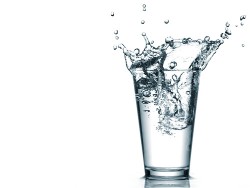 We can talk about a kind of "calcium cycle in nature", since it enters plants from the soil, through them into the organisms of ungulates that feed on them, then – through meat and milk – to representatives of predators and omnivores (including us).
We can talk about a kind of "calcium cycle in nature", since it enters plants from the soil, through them into the organisms of ungulates that feed on them, then – through meat and milk – to representatives of predators and omnivores (including us).
Depleted agricultural soil, giving calcium to plants, receives it again as part of manure fertilizers.
From agricultural crops with the strongest &171;calcium sponges&187; are cabbage, clover and alfalfa . The latter are known to be considered the best feeds for dairy cows. That is why the milk of Altai cows is the most useful in its composition.
Those whose main diet is fish and seafood are also not depleted of calcium, due to its high content in any natural water, but especially in the sea.
With drinking water, we get from 10 to 30% (depending on its hardness) of our daily calcium requirement. We are not talking about boiled water, which "softens" the water, thereby removing salt impurities (they can be observed as a white plaque on the walls of the kettle). Special drinking water is filtered, while maintaining the optimal amount and proportions of mineral compounds. Keep this fact in mind when calculating the calcium content in the diet, since overdose is more dangerous than deficiency.
Human daily requirement
It's time to talk about a person's daily calcium requirement. It is global when compared with the need for other inorganic elements. And any failure in its receipt is instantly monitored by the body's defense systems, followed by the mobilization of all resources to "fill the void."
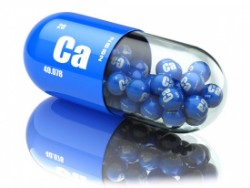 Calcium is present in all vertebrates in three species. Most of its mass is concentrated in the form of hydroxyapatite in hard tissues: bones, teeth, nails, hair. At the ionic level, calcium is involved in blood clotting, and at the intercellular level – in the regulation of most intracellular processes: from hormonal secretion to muscle contraction.
Calcium is present in all vertebrates in three species. Most of its mass is concentrated in the form of hydroxyapatite in hard tissues: bones, teeth, nails, hair. At the ionic level, calcium is involved in blood clotting, and at the intercellular level – in the regulation of most intracellular processes: from hormonal secretion to muscle contraction.
Daily calcium requirement it is customary to classify, depending on the age of a person and special conditions:
- Children from 4 to 8 years old and adults from 19 to 50 years old: 800-1000 mg;
- Children from 9 to 18 years old: 1100 &8212; 1300 mg;
- Older people after 50, as well as menopausal women:1500 mg;
- Pregnant women:1500 mg.
The need for daily replenishment of the body with calcium is due to a large percentage of its content in the human body (2% of the total weight), as well as the constant movement of bone matter. The process of dying off old cells and replacing them with new ones occurs non-stop, which means that the need for building material does not run out.
A small child from infancy to 2 years old has a 100% change in bone mass, so the basis of his diet should be milk, and especially maternal milk, the optimal composition of which contributes to the complete absorption of calcium.
The increase in calcium requirements in adolescent children is explained by active growth and puberty during this period, which requires the coordinated work of all body systems, and calcium deficiency will be critical.
After 50, the physiological process of reducing bone mass is expressed in the prevalence of the death of old cells over the creation of new ones. As a result, bones become brittle, fractures can occur even with minor bruises.
The consequences of a lack
Because it is responsible for every second vital functions (contraction and relaxation vessels and muscles, including heart muscle , secretion of hormones and cells, transmission of nerve signals), a wise body reacts to its even minimal deficiency in the blood.
More precisely, the guardians of the "calcium order" in our body are the parathyroid glands located behind the thyroid glands. The hormone they release, parathyroid hormone, is a kind of "immediate response group" to calcium deficiency.
Below are some diseases caused by hypocalcemia:

- Caries, stomatitis;
- Rickets in children;
- Osteoporosis;
- Heart failure;
- Cataract;
- Blood clotting disorders;
- Immune deficiency;
- Pathology of the lens of the eye;
- Neuroses and other disorders of the nervous system;
- Multiple sclerosis.
It is important to know that the work of the parathyroid glands is activated at night and in the dark, which is why healthy sleep is so important, especially for young children. In recent decades, calcium-rich foods, as well as calcium supplements, have been advised to be taken in the evening for the same reason. As arguments, the point of view is given that most of the calcium taken in the morning and in the afternoon is not absorbed properly and is washed out of the body with liquid.
However, there is no sufficient evidence of this, so it is optimal to adhere to the traditional system of Soviet kindergartens: a morning portion of milk porridge with a piece of cheese, cabbage soup for lunch and a curd casserole or omelet for afternoon tea.
In a word, the daily dose of the element should be divided into several doses. Following this principle, you will definitely not make a mistake, because it is absolutely certain that in large quantities and at the same time this macronutrient will not be fully absorbed by the body.
General characteristics of the calcium diet
To raise calcium in the body with the help of home and folk remedies, take care of the regular intake of the following products:
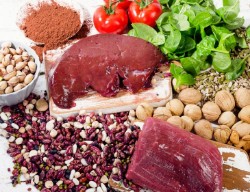
- Low-fat milk and dairy products. High fat content acts as an antagonist of calcium, preventing its absorption. The optimal fat content for milk is 1%. Some vegetable fats also interfere with the absorption of calcium. This is especially true for palm oil, which is part of some dairy mixtures. The mechanism of action of fat is binding. Calcium reacts with fat, turning into a kind of insoluble soap, which is excreted from the body with feces.
- Vegetables and greens. It is the greens that need to be put in second place after milk in the preparation of the daily diet. Garlic, celery, parsley, dill, coriander, dandelion, or dandelion leaf, lettuce and watercress, leeks are especially rich in calcium. Of the vegetables, the first place is occupied by white cabbage and all other types of cabbage.
- Fruits , especially persimmons and dried apricots.
- Low-fat protein products of vegetable and animal origin, especially legumes and fish. Herring, sprat and sardines are very useful for fish. The latter are convenient in canned food, due to the large number of edible small bones. For better absorption, it is better to buy sardines in their own juice, not in oil.
- Nuts and seeds. The concentration of calcium in them is explained by the lack of moisture. Almonds are primarily rich in calcium from nuts, and sunflower seeds are preferred from sunflower seeds.
Paradoxically, the highest calcium content per 100 g of the product is observed not in dairy products, but in poppy seeds and sesame seeds. Although in some tables, the first place is still given to Parmesan cheese and other hard cheeses, after which sesame seed is confidently given. 100 g of both contain approximately the daily norm of adult calcium.
It would seem that the problems have been solved: if it is impossible to chew and swallow about half a cup of sesame seeds at once, then 100 g of delicious cheese can be eaten. But the irony of nature lies in the fact that a high percentage of fats in these products will cause a rapid leaching of calcium from the body. It is the low fat composition of soft white cheeses of the eastern directions that explains their great usefulness, compared with hard ones.
Top 10 products by element content
- Eggshells. Although this is not a food product, but a mineral supplement, it should still be mentioned, because one shell contains up to 2 g of ionized calcium. This means that only half of the supplement crushed by a blender can cover the daily requirement of the body. It is important to thoroughly wash the shell, peel off the inner film and boil for 5 minutes.
- Poppy and sesame seeds -1300-1400 mg per 100 g;
- All hard cheeses - from 650 to 1200 mg. The largest composition is in "Parmesan", the smallest – in "Suluguni" and "Gouda";
- 1% milk powder - 1100 mg;
- Sprats and sardines - from 300 to 380 mg;
- Sunflower seeds - 360 mg;
- Basil - 360 mg. It can be grown in pots on the windowsill. The plant has an amazing aroma. In its homeland, the Middle East, it is used as an ornamental plant and a fresh seasoning for meat;
- Almonds - 250 mg.
- Soybeans - 240 mg, as well as other legumes (especially beans – 190 mg). To extract phytic acid from legumes, which interferes with the absorption of calcium, it is enough to simply soak them overnight.
- Garlic - 180 mg. And again, for wisdom, to the East. In Lebanese cuisine, garlic, along with cilantro, is added to absolutely every stew, and the bill goes not to the cloves, but to the heads (take into account the size of oriental pots designed for large families). Thus, in addition to the taste effects, a calcium balance is achieved.
Also check out the table of calcium-boosting foods:
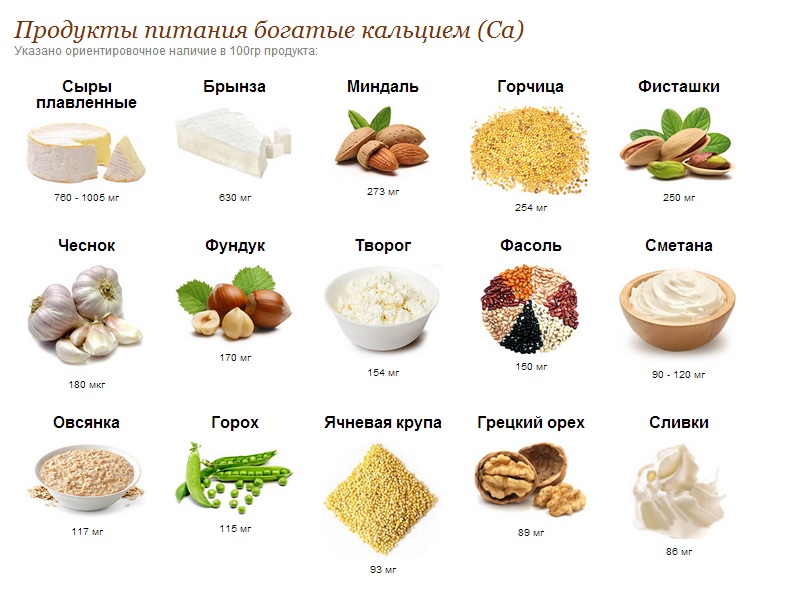
;
Factors necessary for its assimilation
The amount of calcium that enters the body with food and water is important, but even more important is how much of it can be safely absorbed. The high chemical activity of the element is the cause of lightning–fast connective reactions with other components, as a result of which chemical metamorphoses that cannot be absorbed by the body are washed out without a trace along with the precious macronutrient.
If you underestimate the role of concomitant factors, you can eat kilograms of calcium, and at the same time have a deficiency of it.
1. Presence of D vitamins
is the most important condition for the absorption of calcium from the small intestine. Adults should receive about 800 IU per day. D2 comes with food:
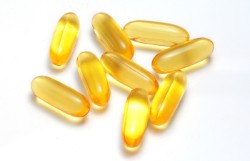
- Fish oil,
- Herring,mackerel, tuna,
- Cod liver,
- Cheese,
- Cocoa,
- Egg yolk,
- Sour cream.
2. Magnesium.
It is necessary to reduce the risks of calcium loss in the urine.
The following foods are rich in magnesium
:

- Oats;
- Walnuts;
- Buckwheat;
- Green peas;
- Beans;
- Mustard.
3. Zinc.
It promotes the absorption of calcium, and is also involved in the process of bone formation. They are rich in:

- Chicken heart;
- Pine nuts;
- Cheeses;
- Sunflower seed;
- Shrimp;
- Peanuts;
- Seaweed.
4. Potassium.
Like magnesium, this element prevents calcium loss. Saturated with potassium:

- Dried apricots;
- Beans;
- Sea cabbage;
- Prunes;
- Raisins;
- Hazelnuts, almonds, peanuts;
- Lentils.
What should be avoided?
To avoid calcium starvation, exclude from the diet the following foods that reduce calcium in the blood:

- Excessive consumption of caffeine-containing products (Do not drink coffee or black tea earlier than two hours after taking calcium-containing products and drugs. It is believed that adding milk to coffee or tea, as well as lemon to the latter, can partially neutralize the harmful effects of nicotine.)
- Lots of sweets and chocolate;
- Bold;
- Nicotine and alcohol;
- Ecologically polluted areas;
- Possibilities of household and occupational poisoning with heavy metals, especially lead and strontium;
- Sedentary lifestyle.
On the effectiveness of artificial drugs
Many modern people, especially women, having crossed the threshold of their 40th birthday, begin to intensively take various dietary supplements containing ionized calcium. Prudence cannot be denied to them. Megacities deprive us of the opportunity to live in harmony with nature, eat well and stay in the sun, and poor ecology only adds toxic reagents, some of which even take calcium out of the bone mass.
The fact is that lead is similar to calcium, due to its softness and activity, that is, it reacts easily. When ingested, it is gradually deposited in the bones, taking out calcium, and thus is the cause of a deficiency of the latter, and at the same time &8212; the strongest toxin.
So, taking calcium supplements is sometimes directly caused by adverse environmental factors, lifestyle, intense sports activities, as well as age characteristics, pregnancy and postoperative necessity.
Nevertheless, the effectiveness of taking drugs is not always unambiguous , due to the difficulty of calcium absorption. Therefore, it is impossible to rely on drugs alone, besides, their prolonged use leads to kidney disorders and other disorders. That is why a properly formulated diet, as well as sufficient exposure to the sun with the presence of physical activity, are relevant for people of all groups and ages.
When is the use of pharmaceutical products justified?
 During periods of active growth, intense sports training, menopause in women and after surgery, as well as with diagnosed diseases associated with calcium deficiency, various drugs are prescribed where calcium acts in its pure form or in combination with vitamin D, magnesium, potassium and zinc.
During periods of active growth, intense sports training, menopause in women and after surgery, as well as with diagnosed diseases associated with calcium deficiency, various drugs are prescribed where calcium acts in its pure form or in combination with vitamin D, magnesium, potassium and zinc.
The necessary combination and dosage is detected only during tests and is prescribed by a doctor.
Remember that an overdose of calcium is more dangerous than its deficiency, since the latter can be regulated by the body.
Any medications that help treat calcium deficiency are best taken at the same time as food and it is important to drink plenty. Simultaneous administration of antibiotics and anti-inflammatory drugs acts as a factor reducing the absorption of calcium.
Useful video
We recommend you to familiarize yourself with such videos:
Conclusion
Hypocalcemia is dangerous at any age, but especially for young children, pregnant women and the elderly. Nature has endowed our body with a unique ability to compensate for the critical deficiency of this trace element, but it should be remembered that without replenishment, natural resources are exhausted.
Do not skimp on health, and also avoid bad habits. May your table always delight with a wealth of colors. Follow the saying of the wise: Let food will be your medicine, not medicine &8212; your food.


